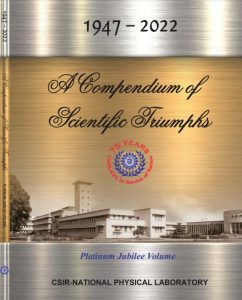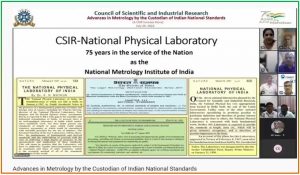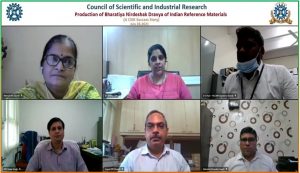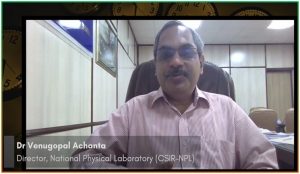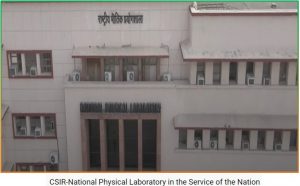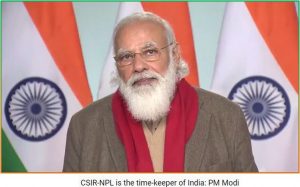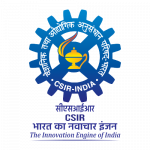
सीएसआईआर-राष्ट्रीय भौतिक प्रयोगशाला
CSIR-National Physical Laboratory
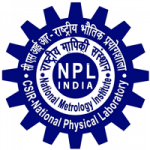
Achievements/Technologies


Videos
Recent Recognition/ Awards
- Prof. Venugopal Achanta (Director, CSIR-NPL) elected as Fellow of OPTICA (Optical Society of America)
- Prof. Venugopal Achanta (Director, CSIR-NPL) elected to the Commission C2 of International Union of Pure and Applied Physics (IUPAP)
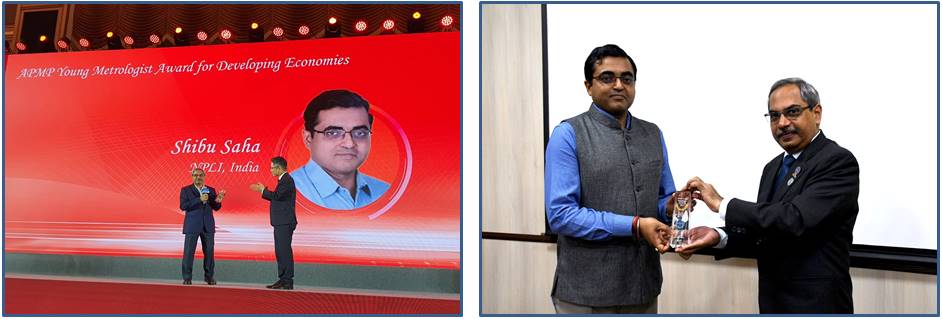
- Dr. Shibu Saha (Scientist CSIR-NPL) has been awarded the APMP Young Metrologist Prize for Developing Economies-2023 by APMP (Asia Pacific Metrology Programme) in recognition of the efforts in APMP’s activities among young metrologists in developing economies.
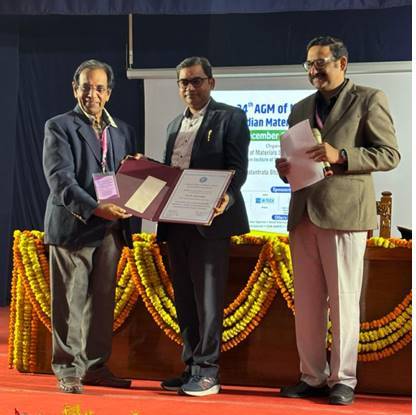
Dr. Govind Gupta (Chief Scientist) has received prestigious MRSI Distinguished Lectureship Award for the year 2023-24
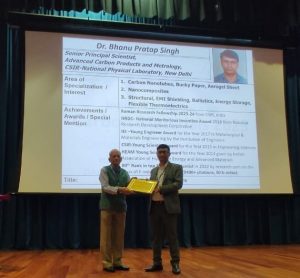
- Dr. Bhanu Pratap Singh has been awarded the B D Bangur Award-2023 presented by the Indian Carbon Society, for the outstanding accomplishments in the field of carbon science and technology and for encouraging and promoting research work in the field of carbon.
- Dr. Bhanu Pratap Singh (Sr. Principal Scientist) has been selected for the award of Raman Research Fellowship for the year 2023-2024 .
- Dr. Kriti Tyagi (Sr. Scientist) has been awarded the ISEES Young Scientist Award-2024 by the International Society for Energy, Environment and Sustainability.
Dr. Komal Bapna received prestigious Raman Research Fellowship to work on Realization and Dissemination of the thermodynamic scale based on Acoustic Gas thermometry at INRIM, Italy for a duration of six months.
Dr. Lalit Goswami elected as Fellow IETE, India (2023-24).
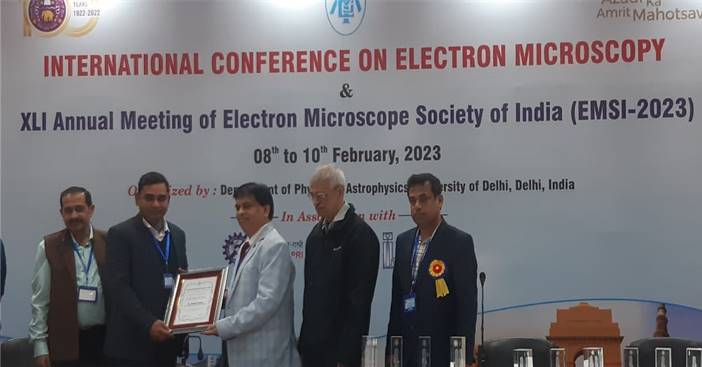
Dr. Govind elected Fellow the Electron Microscopy Society of India (FEMSI), India- 2023
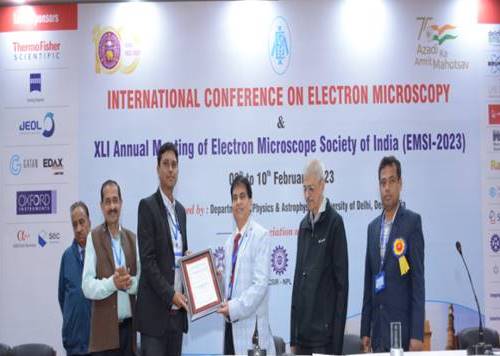
EMSI-Excellence in Microscopy Award conferred to Dr. Jai Shankar Tawale (Feb. 2023)
Transfer of Technology
- CSIR-NPL transferred the technology of High volume PM10 sampler to M/s. Bimimicry Technologies Pvt. Ltd. during Innovative and Sustainable Business Strategies for Science and Technology (ISBS-2025) on 27/01/2025.

- CSIR-NPL transferred tech of high through-plane electrically conductive composite plates from different conductive fillers for fuel cell apps to M/s Virayaa Green Energy Systems Pvt. Ltd. at inaugural function of CSIR Innovation Complex, Mumbai on 17/01/2025.

- CSIR-NPL transferred technology ‘Indigenous MWCNTs Synthesis by CVD and development of flexible MWCNTs paper therefrom’ to Ddev Plastiks Industries Limited, Daman.
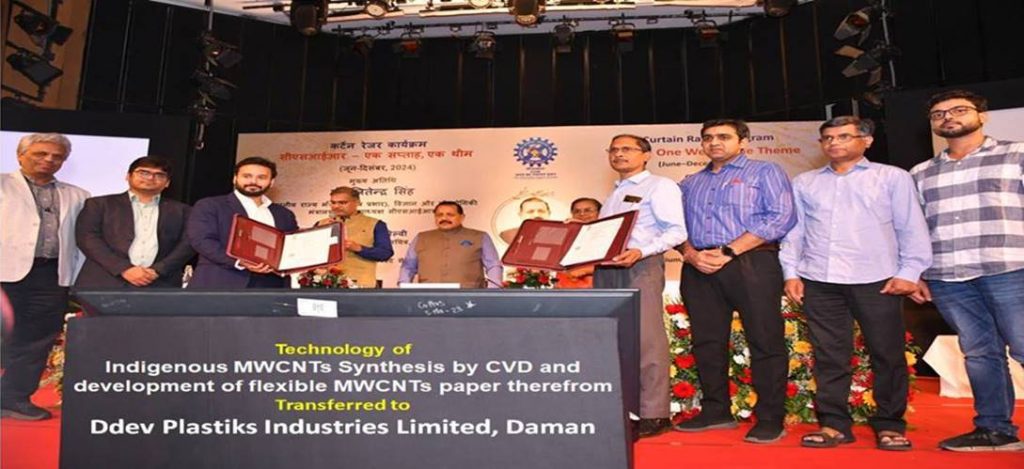
- CSIR-NPL transferred technology ‘Indigenous MWCNTs Synthesis by CVD and development of flexible MWCNTs paper therefrom’ to Ddev Plastiks Industries Limited, Daman (June 2024)
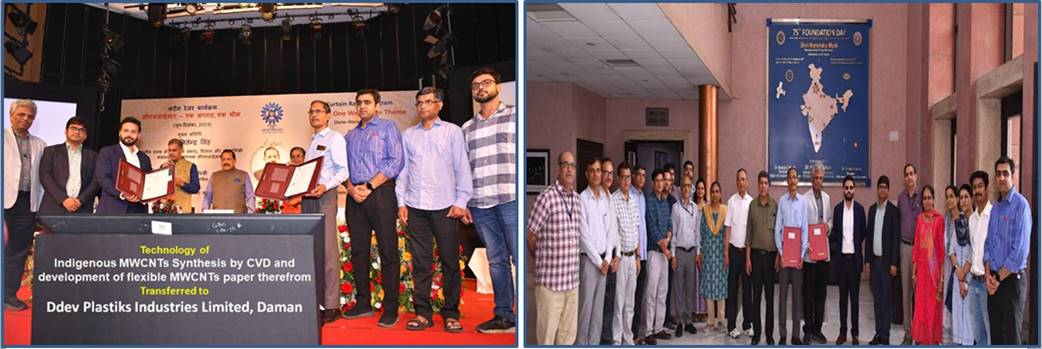
Major COVID-19 Contributions
- Dissemination of Measurement Traceability for UV Radiation on Regular Basis
Introduction: The measurement traceability for UV radiation has been derived for its dissemination to help contain the Corona virus (Covid-19) and other viral deceases.
About the Initiative/Technology: Traceability of irradiance measurement for UV radiation is being disseminated to provide apex measurement and calibration to support MSMEs, Startups, manufacturing industries, test & calibration laboratories which are contributing in development of such radiation based applications/appliances to help contain the Corona virus (Covid-19) and other viral deceases.
Outcome: The new initiative helps in not only containing the Corona virus (Covid-19) and other viral deceases but also generating ECF for CSIR-NPL and sufficing testing-calibration labs/manufacturer the vital traceability in India itself which otherwise, takes lots of process time, foreign exchange and dependence to get it from foreign NMIs.
- PCR Free, Facile Luminescence based Kit for Ultrasensitive Detection of Covid-19

Introduction: Development of PCR free, facile luminescence based kit for ultrasensitive detection of covid-19 (GAP200132) funded by Department of Biotechnology (DBT) , Govt. of India
About the Initiative/Technology:
– Synthesized the carboxylic group functionalized Eu(TTA)3Phen complex nanoparticles.
– The carboxylic functionalized Eu(TTA)3Phen shows red emission at 615 nm wavelength upon 365 nm excitation wavelength.
– The further conjugation of carboxylic functionalized Eu(TTA)3Phen to Oligoneuceotide, purification has been standardized.
– The designed molecular beacon has shown binding to synthetic SARS-cov2 mRNA genome.
– Our new concept of Eu (TTA)3 Phen nanoparticle, fluorescent in red region with quantum yield of ~1 and can be excited by commercially available LED of 365 nm, which can be easily incorporated in mobile light as we proposed.
– The major advantage of this Eu (TTA)3 Phen nanoparticle is that it is easy to disperse in desired medium for longer suspension time which is highly desirable for proposed objectives.
– The designed Eu (TTA)3 Phen nanoparticle is non-toxic, hence can be used for in vivo imaging and other biological imaging. This probe can also be used for developing immunoassays such as lateral flow-immunoassay.
Outcome: Luminescence based kit for ultrasensitive detection of covid-19.
Significant S&T Achievements
- Set-up for Calibration/testing of Contact Type Clinical Thermometers

Introduction: Calibration/Testing facility for Clinical Thermometers
About the Initiative/Technology: TSP Project of Rs. 1.19 Cr from Legal Metrology. Facility of Clinical Thermometer calibration/ Testing Facility established at RRSL Varanasi and Ahmedabad.
Outcome: The set-up was designed and developed by Temperature and Humidity Metrology department and successfully established at Legal Metrology RRSLs at Varanasi and Ahmedabad. It will help RRSLs to do Model approval tests of digital clinical thermometers as per International Standards. This will help improve the quality in healthcare and support the International and GoI initiatives on going towards mercury-free technologies in Clinical Sector. The facility in Varanasi was inaugurated by Hon. Prime Minister of India.
- Set-up for Calibration/testing of Non-invasive BP Measurement Apparatus

Introduction: Calibration/testing system for non-invasive blood pressure (NIBP) devices at Regional Reference Standards Laboratories
About the Initiative/Technology: We have established the calibration/testing system for non-invasive blood pressure (NIBP) devices at Regional Reference Standards Laboratories (Varanasi, and Faridabad), which provided the national traceability of non-invasive sphygmomanometer.
Outcome: This has enabled India to develop a mechanism to test and calibrate the imported and indigenous digital and mechanical blood pressure measuring devices. In order to establish this system, different designs were proposed, and one final design was fabricated. After the completion of the fabrication, two systems were delivered to Regional Reference Standards Laboratories located at Varanasi and Faridabad.
- Device to Use Conventional Ultrasonic Flaw Detector as EMAT based Flaw Detector

Introduction: Ultrasonic Flaw Detectors (UFDs) are extensively used for the detection of flaw, cracks or voids in the field of Non-Destructive Testing (NDT).
About the Initiative/Technology: The material thickness measurement is utilized in various places, including industry. It uses piezoelectric based contact transducers generally called as ultrasonic probes and requires a suitable couplant to test the material.
Outcome: The electromagnetic acoustic transducer (EMAT) is a non-contact method of generation and detection of ultrasonic waves in electrically conducting materials. CSIR – National Physical Laboratory has recently developed a technology by which the conventional UFD can be utilized as EMAT-based couplant-free UFD. All the inherent powerful data analysis capabilities of the conventional UFD can be utilized with EMAT based testing of electrically conducting metallic structures.
- Low Volume PM2.5 Analyzer Certification
Introduction: The Ministry of Environment, Forest and Climate change has designated CSIR-NPL as a verification and certification agency for emission and ambient air pollution monitoring equipment through a gazette notification. CSIR-NPL has developed a CSIR-NPL India Certification Scheme (NPLI CS) to provide certification of performance evaluation of air pollution monitoring equipment. In this context, CSIR-NPL has launched the certification facility for performance evaluation of Indian-made low volume PM2.5 samplers.
About the Initiative/Technology: Certification facility for performance evaluation of Indian-made low volume PM2.5 samplers.
Outcome: This facility will help the Indian manufacturers of low volume PM 2.5 samplers for product quality assurance and demonstration of its technical competency.
- Ozone Analyzer Certification
Introduction: As a part of the CSIR-NPL India Certification Scheme (NPLI CS) CSIR-NPL established a testing and calibration facility for ambient Ozone monitoring equipment.
About the Initiative/Technology: The testing facility will help to validate the equipment measurement capabilities and provide certification for its intended use.
Outcome: This will facilitate indigenous manufacturers to demonstrate the quality of their equipment and overcome trade barriers in a cost effective way to contribute to the national vision of `Atamnirbhar Bharat’.
- Infusion Pump Analyzer Calibration Facility
Introduction: CSIR-NPL India has developed a calibration facility for infusion pump analyzer, “”The first of its kind””, in India for accurate measurement of parameters associated with an infusion pump to support the quality infrastructure in the healthcare sector
About the Initiative/Technology: The biomedical metrology activity at CSIR-NPL is supporting the health care sector (hospitals, clinical laboratories, and calibration and testing laboratories) in India by providing calibration services for medical devices
Outcome: Support to the health care sector (hospitals, clinical laboratories, and calibration and testing laboratories)
- A Small-sized Microcontroller based DC Gaussmeter (Range: +/-300 Gauss, Resolution: 0.73 Gauss)

Introduction: Developed and validated a small-sized microcontroller based DC Gaussmeter of range +/-300 Gauss
About the Initiative/Technology: With further modification/upgradation the product will be registered for technology transfer.
- Magnetic Permeability Test Set-up for Feebly Magnetic Materials

Introduction: Developed and validated a magnetic permeability measurement setup (as per ASTM A342 and EN60404-15) for calibration of magnetic permeability meter and testing product quality of steel.
- A Magnetic-based Sensor to Detect Muscle Contraction for Controlling Hand Prosthesis

Introduction: Developed a novel magnetic-based sensing technique to register muscle contraction information for controlling the upper-limb prosthesis.
About the Initiative/Technology: After a successful trail of device on amputees it will be further registered for technology transfer.
- Experimental Setup for RF E-field Strength Measurement using Rydberg Atom-based Quantum Sensor
(this setup is at NISER, Bhubaneswar; CSIR-NPL and NISER have worked in collaboration for initial set of experimental data)

Introduction: Rydberg Atom based Quantum-Sensor for E-Field Sensing
About the Initiative/Technology: The atom-based standards have been accepted worldwide for measurement of time, frequency, gravity, magnetometry, and length. To date, the RF E-field sensing and calibration techniques does not have traceability to physical constants and have complex traceability path. The dependency on the materials under use, limitation of bandwidth of antennae under use, the surrounding parameters at the time of measurement, and the incorrect evaluation of uncertainties are some of the limitations of current techniques which makes measurable quantity vulnerable to the errors. These measurements will lead to establish the quantum communication and quantum sensing calibration facilities at CSIR –NPL for upcoming smart communication devices.
- Hemispheres of Copper Cavity Resonator Designed and Fabricated for Acoustic Gas Thermometry

Introduction: Design and Fabrication of critical components for realization of Boltzmann Constant Based new kelvin.
About the Initiative/Technology: NCP MLP 201432 Project
Outcome: The design of the Copper Cavity Acoustic Resonator, pressure and vacuum assembly, the AGT crane mounting on 300 L high stability has been completed, High-pure gas Handling facility is designed and fabricated, optimization of pressure-flow is going on.
- Water Remediation of Organic Pollutants and Industrial Wastes by Solution- route Processed CZTS Nanocrystals

Introduction: CZTS (Cu2ZnSnS4), a P-type semiconductor with a direct bandgap (1.2-1.7eV), earth-abundant, non-toxic, and has a large absorption coefficient makes it extremely useful in optoelectronics and light-harvesting applications. The as-synthesized CZTS nanoparticleshas been used to study the photocatalytic degradation activity of organic pollutants and industrial waste in the water.
About the Initiative/Technology: The photocatalysis experiments were performed under two conditions: (i) Under bare sunlight (Intensity ~ 900W/m2) (ii) focussing the sample under the sunlight via converging lens (1800W/m2). The photocatalytic efficiencies were then compared and the best photocatalytic efficiency achieved under sunlight was 98.4% for organic pollutants and 75% for industrial waste via converging lens while the corresponding efficiencies with bare sunlight were 98.1% and 73% respectively. To the best of the author’s knowledge, a rapid and highly efficient photocatalysis of CZTS NPs employing a converging lens for water-remediation without the usage of noble & transition-metals has been reported for the first time
Outcome: A Novel Method of Water Remediation of Organic Pollutants and Industrial Wastes by Solution- Route Processed CZTS Nanocrystals”
- Blue Laser Induced White Light Generator

Introduction: The blue laser induced white light is a promising candidate to revolutionize the luminous intensity of the white light by several orders of magnitude as compared with the existing blue light‐emitting diodes based white light. This emerging technology has an extremely bright future with endless uses of tunable power of the laser that controls the intensity of the emitted white light for several applications such as head lights in automobile industries, rail engines, play ground and many more.CSIR-NPL has designed and developed a prototype device based on phosphor‐incorporated sapphire disc (PISD) on excitation by a blue laser diode produces highly-efficient white light.
About the Initiative/Technology: The CSIR-NPL has developed this prototype under a consultancy project entitled “Development of YAG:Ce yellow phosphor integrated with blue diode laser to produce white light for a car headlight application”” funded by Fiem Industries Limited, Sonepat- Haryana, India. This new approach provides a paradigm shift to produce highly-efficient white light based on PISD integrated with a blue laser diode as compared with the conventional technology. Recently, Fiem Industries conducted a joint meeting of industries collaborative discussion (Yamaha, Japan and Fiem) for futuristic lighting systems development and related demonstration on 13th October 2021 for automobile head lights with leading international two wheeler company Yamah, Japan at Fiem Industries Limited, Sonepat, Haryana, India. CSIR-NPL and Fiem Industries limited jointly presented and demonstrated a prototype based on Laser Assisted Remote Phosphors (LARP) white light generation for automotive lighting for automobiles. This joint effort is a stepping stone towards make in India (Vision of Nation) for future technology based on Blue Laser Induced White light.
Outcome: A blue laser induced phosphor coated white light prototype device.
- Monolayer MoSe2

Introduction: Monolayer MoSe2 is one of the fascinating 2D structures in TMDs, which has high optical absorbance, good thermal stability, and exhibits photoluminescence enhancement compared to its bulk counterpart. For designing optoelectronic and quantum devices, the optical properties need to be studied.
About the Initiative/Technology: CSIR-NPL have been synthesized monolayer MoSe2 flakes using a lab-built CVD setup and a broad range of shapes including, sharp triangle, truncated triangle, hexagon, and rough edge circle has been achieved. The quality of as-grown monolayer MoSe2 flakes are analyzed by optical microscopy, Raman spectroscopy, and photoluminescence (PL) successively. The lattice and quasiparticle dynamics are examined under different growth conditions using Raman and PL spectroscopy. This study will be highly suitable to control the optical properties.
Outcome: Tunability of excitonic quasiparticles in CVD grown monolayer MoSe2.
Important Technological Contributions against Sustainable Development Goals (SDGs)
- Clean Water and Sanitation

Introduction: Water pollution is a major challenge all over the world. Contaminated water causes health issues and water-borne diseases. The presence of higher levels of contaminants in drinking water beyond permissible limit isconsidered unsuitable for drinking as per the WHO guidelines. BIS (10500: 2012 Drinking Water) fixed a maximum limit on inorganic and organic elements for adaptable and sustainable aquatic and human life.
About the Initiative/Technology: The research work has been carried out to develop adsorbents to remove inorganic and organic contaminates using eco-friendly plant waste biochar The orange peel biochar demonstrate 99.2% adsorption efficiency.
Outcome: Eco-friendly orange peel biochar is proved as an efficient technology for water purification for removal of dyes, heavy metals and organic impurities from contaminated water.
- Climate Action

Introduction: Currently Global warming is a major climate issue with cement production and associated industries accounting for 5- 8 percent of world’s total carbon dioxide production. In this scenario, Geopolymer is an excellent advancement and replacement for ordinary Portland cement (OPC). Geopolymer binders are three-dimensional amorphous structure formed of silicon and aluminum tetrahedral units jointed together by oxygen atoms through long range covalent bonds. Fly ash, a waste by product of coal industry, is abundant in silica (50%) and alumina (25%) can be a suitable choice as raw material for geopolymer synthesis and geopolymer binders base material.
About the Initiative/Technology: Geopolymers are synthesized by activation of industrial waste materials fly ash by alkaline solution.
These materials for their outstanding mechanical and thermal resistance properties similar with cement provides path for usage in construction industry and as new sustainable building materials.Outcome: Geopolymer are sustainable green building materials and replacement for cement
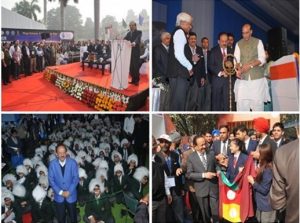
IISF 2016
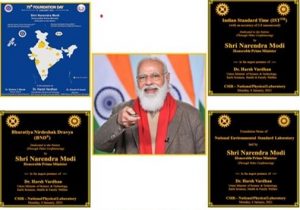
Hon'ble PM Sh. Narendra Modi dedicated National Atomic Timesacle, BND, CRM to the nation
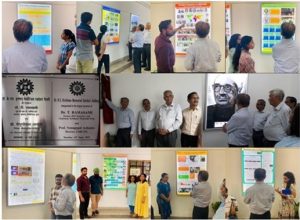
Inaugration of Dr. KS Krishnan Memorial Scholar's Gallery by Dr. T. Ramasami (Former DST Secretary)
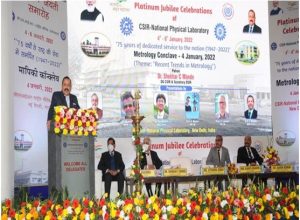
Hon'ble Minister Dr. Jitendra Singh at Metrology Conclave
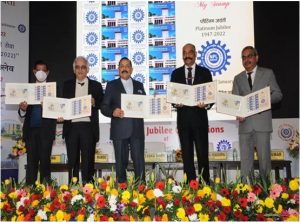
Hon'ble Minister Dr. Jitendra Singh released Customized My Stamp and Special Cover
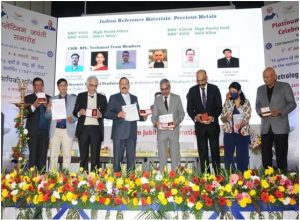
Hon'ble Minister Dr. Jitendra Singh released Indian Reference Materials
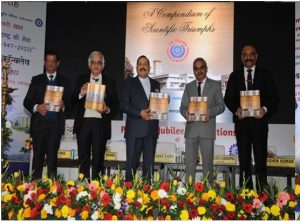
Hon'ble Minister Dr. Jitendra Singh released CSIR-NPL Compendium
All Rights Reserved - The Official Website of CSIR-National Physical Laboratory, CSIR, under Ministry of S & T, Govt. of India
Site Designed & Managed by Knowledge Resource Centre
CSIR-NPL, New Delhi
India
